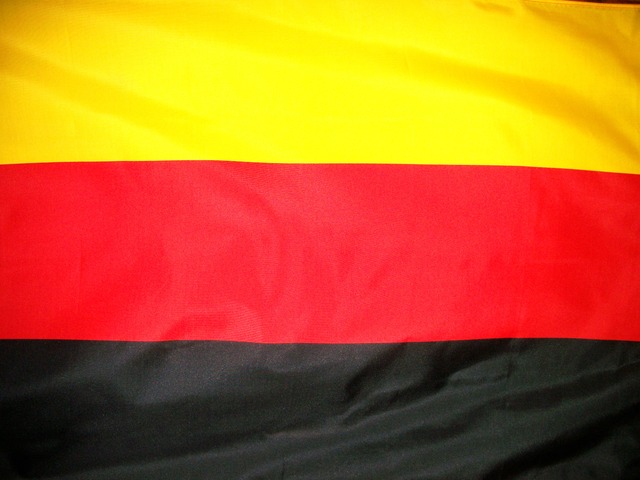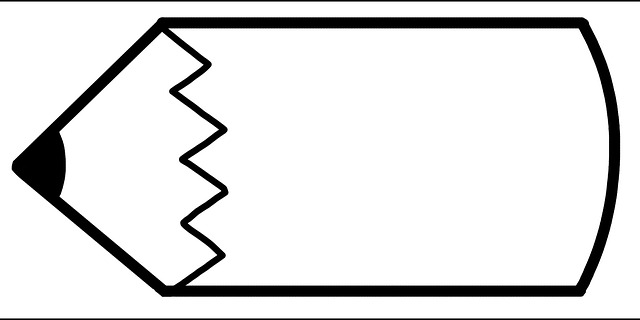نظام بريتون وودز
نظام بريتون وودز Bretton Woods system، هونظام ادارة نقدي أسس قواعد للعلاقات التجارية والمالية بين الدول الصناعية الكبرى في العالم في منتصف القرن العشرين. كان نظام بريتون وودز أول نموذج لنظام نقدي قابل بالكامل للتفاوض يهدف إلى تنظيم العلاقات بين الدول المستقلة.
وجد ممثلوالدول المجتمعة في مؤتمر بريتون وودز عام 1944 حتى قاعدة المضى لم تكن مرنة ولم تساعد على تجاوز الأزمات الاقتصادية؛ مما جعلهم يقررون الاستعاضة عنها بنظام حديث سمي نظام بريتون وودز مبني على أساس تحديد ثمن لكل عملة لقاء جميع من الدولار والمضى. ووفقاً لهذا النظام فقد أصبحت أسعار الصرف ثابتة وقابلة للتعديل في الوقت نفسه. فحين تجد الدولة المعنية حتى قيمة عملتها قد ابتعدت كثيراً عن مستوى الأسعار السوية أوالسليمة فإن لها الحق حتى تتفق مع صندوق النقد الدولي الذي أُحدث في بريتون وودز لتعديل قيمة عملتها. إلى غير ذلك نجد حتى الفارق الأساسي بين نظام بريتون وودز ونظام قاعدة المضى هوحتى نظام بريتون وودز يعطي إمكانية الاتفاق على تغييرات أسعار المصرف بين الدول بالتفاهم والتعاون، فنظام بريتون وودز هونظام ثابت إلا أنه مرن وقابل للتعديل.
استعداداً لبناء نظام اقتصادي دولي، في الوقت الذي كانت الحرب العالمية الثانية لا تزال مستعرة، اجتمع 730 مندوب من جميع دول الحلفاء ال44، في فندق ماونت واشنطن ببلدة بريتون وودز، نيوهامپشر الأمريكية، للمشاركة في المؤتمر النقدي والمالي للأمم المتحدة. توافد المشاركون من 1-22 يوليو1944، وسقطت الاتفاقية في اليوم الأخير للمؤتمر.
من أجل إنشاء نظام للقواعد، المؤسسات وإجراءات لتنظيم النظام النقدي الدولي، قام المخططون في بريتون وودز بإنشاء صندوق النقد الدولي والبنك الدولي للإنشاء والتعمير، الذي يعتبر اليوم جزءاً من مجموعة البنك الدولي. بدأت هذه المنظمات في العمل عام 1945 بعد تصديق عدد كافي من البلدان على الاتفاقية.
كانت الملامح الرئيسية لنظام بريتون وودز هي إلزام جميع بلد بوضع سياسة نقدية تحافظ على ثمن الصرف بربط عملتها بالدولار الأمريكي وقدرة صندوق النقد الدولي to bridge temporary موازين المدفوعات.
في 15 أغسطس 1971، أنهت الولايات المتحدة من جانب واحد قابلية تحويل الدولار الأمريكي للمضى أدى هذا إلى نهاية نظام بريتون وودز وأصبح الدولار عملة إلزامية. يعهد هذا باسم صدمة نيكسون، الذي خلق وضع أصبح فيه الدولار الأمريكي عملة احتياطية تستخدمها الكثير من الدول. في الوقت نفسه، أصبحت الكثير من العملات الثابتة (مثل الجنيه الإسترليني)، يمكن تعويمها بحرية.
خلفية تاريخية
تأثرت القاعدة السياسية لنظام بريتون وودز بوقوع ظرفين رئيسيين: الخبرات المتبادلة بعد حدوث الكساد الكبير، هجرز القوى في عدد قليل من الدول التي تعززت بعد إستبعاد عدد من الدول الهامة بسبب الحرب الجارية.
الكساد الكبير
ساعد الاجماع الكبير على أهمية أهداف ووسائل الادارة الاقتصادية الدولية، على الوصول للقرارات التي صدرت في مؤتمر بريتون وودز. والتي كان أساسها الإيمان المشهجر بالرأسمالية. اختلفت حكومات الدول المتقدمة في نوع الرأسمالية الذي تفضل تطبيقه في اقتصادها الوطني. على سبيل المثال، تفضل فرنسا التخطيط والتدخل الأكبر للدولة (إشراف الدولة)، بينما تفضل الولايات المتحدة التدخل المحدود للدولة.[] ومع ذلك، جميعها تعتمد في المقام الأول على آليات السوق والملكية الخاصة لوسائل الإنتاج.
ومن ثم، كانت أوجه التشابه بينها أكثر من أوجه الاختلاف. وأسفرت الفوضى النقدية التي حدثت في فترة ما بين الحربين، للحكومات المشاركة، عن الكثير من الدروسة القيمة.
كانت الخبرة المكتسبة من الكساد الكبير لا تزال عالقة في أذهان المسؤولين الحكوميين. أمل المخططون في بريتون وودز لمنع تكرار هزيمة الثلاثينيات، عندما إمتنعت الدول الدائنة عن سداد ديون وتعويضات الحرب المستحقة للحلفاء، الذي ترافق مع الميل للانعزالية، مما أدى إلى إنهيار النظام المالي الدولي وإلى وقوع الكساد الاقتصادي العالمي. ظهر ما يسمى "بسياسة إفقار الجار" التي أدت لإستمرار الأزمة، حيث قامت بعض الدول التجارية باستخدام تخفيض العملة في محاولة لزيادة قدارتها التنافسية (أي حمل الصادرات وخفض الواردات)، على الرغم من حتى البحوث التي أجريت مؤخراً تشير إلى حتى فرض السياسة التضخمية بحكم الأمر الواقع من الممكن تفجر بعض القوى الإنكماشية في مستويات الأسعار العالمية (انظر إيتشنگرين "كيف نتجنب حرب العملات"). على الرغم من حتى خفض القيمة تزيد من السيولة الوطنية، فلم يكن هناك استجابة وطنية عميقة ولا تنسيق كافي لاستعادة حجم التجارة الدولية.
على مدى العقد، لم تفلس الأسواق العالمية بسبب الحواجز والقيود المفروضة، عشوائياً بسبب دوافع قومية، على حجم التجارة والاستثمار الدولي. السياسات الحمائية اللاسلطوية والمشجعة للاكتفاء الذاتي والسياست الوطنية التجارية البحتة الجديدة - في كثير من الأحيان ما تتعارض مع بعضها البعض - والتي بزغت في النصف الأول من العقد though variously intended, in the event, عملت بشكل غير متسق وإنهزامي لتعزيز إحلالات الواردات، وزيادة الصادرات الوطنية، تحويل الاستمثارت الأجنبية والتدفقات التجارية، وفي بعض الأحيان منع أصناف محددة من السلع التجارية والاستثمارات من حق الخروج خارج البلاد.
تلك السياسات الوطنية ضمت التكتلات التجارية الإقصائية، مناطق العملات (مجموعة من التدول تستخدم عملة مكائفة، مثل "منطقة الإسترليني" في الامبراطورية البريطانية)، آليات المقايضة الثنائية (انظر السياسة التجارية الألمانية النازية)، ...الخ. سوياً، لا تعمل هذه السياسات فقط على إبطاء تعافي التجارة الدولية، لكنها تمنع أيضاً تدفق رأس المال والاستثمار الأجنبي عبر الحدود.
نتيجة لهذه السياسات الوطنية المتناقضة والغير منسقة، أصيبت التجارة والاستثمار الدولي بالركود - and crucially contemporaneous expert perceptions of the 'whys' of this stagnation best summed up in the phrase 'beggar thy neighbor , decisively conditioned notions of a better global trade and investment system "next time".
حيث حتى الكثير من المراقبين الخبراء ممن نشؤا في ظل كارثة الثلاثينيات، أصبح من واضعي النظام النقدي الموحد الجديد لفترة ما بعد الحرب في بريتون وودز، أصبحت العبارة التحذيرية هي "لا مزيد من تجويع الجار". وأصبحت الشاغل الوحيد هومنع خفض القيمة التنافسية.
Of course today, these key 1930s events look different to careful scholars of the era (see the work of Barry Eichengreen "Golden Fetters: The Gold Standard and the Great Depression, 1919–1939" and "How to Prevent a Currency War") in particular devaluations today are viewed by advanced scholars with far greater nuance. Ben Bernanke's opinion on the subject follows:
"... [T]he proximate cause of the world depression was a structurally flawed and poorly managed international gold standard... For a variety of reasons, including among others a desire of the Federal Reserve to curb the US stock market boom, monetary policy in several major countries turned contractionary in the late 1920s—a contraction that was transmitted worldwide by the gold standard. What was initially a mild deflationary process began to snowball when the banking and currency crises of 1931 instigated an international "scramble for gold". Sterilization of gold inflows by surplus countries [the USA and France], substitution of gold for foreign exchange reserves, and runs on commercial banks all led to increases in the gold backing of money, and consequently to sharp unintended declines in national money supplies. Monetary contractions in turn were strongly associated with falling prices, output and employment. Effective international cooperation could in principle have permitted a worldwide monetary expansion despite gold standard constraints, but disputes over World War I reparations and war debts, and the insularity and inexperience of the Federal Reserve, among other factors, prevented this outcome. As a result, individual countries were able to escape the deflationary vortex only by unilaterally abandoning the gold standard and re-establishing domestic monetary stability, a process that dragged on in a halting and uncoordinated manner until France and the other Gold Bloc countries finally left gold in 1936." (from "Great Depression" B. Bernanke)
At any rate, in 1944 at Bretton Woods, as a result of the collective conventional wisdom of the time. Elite policy circles, gathered there from all the leading allied nations, collectively favored a regulated system of fixed exchange rates, indirectly disciplined by a US dollar tied to gold – a system that relied on a regulated market economy with tight controls on the value of currencies.
Although the various national experts disagreed to some degree on the specific implementation of this system, all agreed on the need for tight controls.
الأمن الاقتصادي
وأيضاً بناء على تجربة سنوات ما بين الحربين، فقد طوّر المخططون الأمريكان مفهوماً للأمن الاقتصادي – حتى نظام اقتصادي عالمي ليبرالي يفترض أن يحسن من احتمالات السلام بعد الحرب. أحد أولئك الذين رأوا ذلك الرابط الأمني كان كوردل هل، وزارة الخارجية الأمريكية من 1933 وحتى 1944. وكان هل مقتنعاً حتى الأسباب الأساسية للحرب العالميتين نبعتا من تمييز اقتصادي وحرب تجارية. وبالتحديد، كان حاضراً في ذهنه قيود التجارة والتبادل (ترتيبات ثنائية) لألمانيا النازية ونظام التفضيل الامبراطوري الذي كانت تمارسه بريطانيا، والذي بمقتضاه فإن الأعضاء السابقين في الامبراطورية البريطانية كانوا يحظون بوضع تجاري خاص، كان سبباً في انطلاق سياسات حمائية ألمانية وفرنسية وأمريكية. وقد جادل هـَل
[U]nhampered trade dovetailed with peace; high tariffs, trade barriers, and unfair economic competition, with war…if we could get a freer flow of trade…freer in the sense of fewer discriminations and obstructions…so that one country would not be deadly jealous of another and the living standards of all countries might rise, thereby eliminating the economic dissatisfaction that breeds war, we might have a reasonable chance of lasting peace.
تزايد التدخل اللحكومي
The developed countries also agreed that the liberal international economic system required governmental intervention. In the aftermath of the Great Depression, public management of the economy had emerged as a primary activity of governments in the developed states.[] Employment, stability, and growth were now important subjects of public policy.
In turn, the role of government in the national economy had become associated with the assumption by the state of the responsibility for assuring its citizens of a degree of economic well-being.[] The welfare state grew out of the Great Depression, which created a popular demand for governmental intervention in the economy, and out of the theoretical contributions of the Keynesian school of economics, which asserted the need for governmental intervention to counter market imperfections.[]
However, increased government intervention in domestic economy brought with it isolationist sentiment that had a profoundly negative effect on international economics.[] The priority of national goals, independent national action in the interwar period, and the failure to perceive that those national goals could not be realized without some form of international collaboration—all resulted in “beggar-thy-neighbor” policies such as high tariffs, competitive devaluations that contributed to the breakdown of the gold-based international monetary system, domestic political instability, and international war. The lesson learned was, as the principal architect of the Bretton Woods system New Dealer Harry Dexter White put it:
the absence of a high degree of economic collaboration among the leading nations will…inevitably result in economic warfare that will be but the prelude and instigator of military warfare on an even vaster scale.
—
To ensure economic stability and political peace, states agreed to cooperate to closely regulate the production of their individual currencies to maintain fixed exchange rates between countries with the aim of more easily facilitating international trade.[] This was the foundation of the U.S. vision of postwar world free trade, which also involved lowering tariffs and among other things maintaining a balance of trade via fixed exchange rates that would be favorable to the capitalist system.[]
Thus, the more developed market economies agreed with the U.S. vision of post-war international economic management, which was to be designed to create and maintain an effective international monetary system and foster the reduction of barriers to trade and capital flows.[] In a sense, the new international monetary system was in fact a return to a system similar to the pre-war gold standard, only using US dollars as the world's new reserve currency until the world's gold supply could be reallocated via international trade.[]
Thus, the new system would be devoid (initially) of governments meddling with their currency supply as they had during the years of economic turmoil preceding WWII. Instead, governments would closely police the production of their currencies and ensure that they would not artificially manipulate their price levels.[] If anything, Bretton Woods was in fact a return to a time devoid of increased governmental intervention in economies and currency systems.[]
ميثاق الأطلسي
The Atlantic Charter, drafted during U.S. President Franklin D. Roosevelt's August 1941 meeting with British Prime Minister Winston Churchill on a ship in the North Atlantic, was the most notable precursor to the Bretton Woods Conference. Like Woodrow Wilson before him, whose "Fourteen Points" had outlined U.S. aims in the aftermath of the First World War, Roosevelt set forth a range of ambitious goals for the postwar world even before the U.S. had entered the Second World War.
The Atlantic Charter affirmed the right of all nations to equal access to trade and raw materials. Moreover, the charter called for freedom of the seas (a principal U.S. foreign policy aim since France and Britain had first threatened U.S. shipping in the 1790s), the disarmament of aggressors, and the "establishment of a wider and more permanent system of general security."
As the war drew to a close, the Bretton Woods conference was the culmination of some two and a half years of planning for postwar reconstruction by the Treasuries of the U.S. and the UK. U.S. representatives studied with their British counterparts the reconstitution of what had been lacking between the two world wars: a system of international payments that would allow trade to be conducted without fear of sudden currency depreciation or wild fluctuations in exchange rates—ailments that had nearly paralyzed world capitalism during the Great Depression.
Without a strong European market for U.S. goods and services, most policymakers believed, the U.S. economy would be unable to sustain the prosperity it had achieved during the war.[] In addition, U.S. unions had only grudgingly accepted government-imposed restraints on their demands during the war, but they were willing to wait no longer, particularly as inflation cut into the existing wage scales with painful force. (By the end of 1945, there had already been major strikes in the automobile, electrical, and steel industries.)[]
In early 1945 Bernard Baruch described the spirit of Bretton Woods as: if we can "stop subsidization of labor and sweated competition in the export markets," as well as prevent rebuilding of war machines, "oh boy, oh boy, what long term prosperity we will have." The United States [c]ould therefore use its position of influence to reopen and control the [rules of the] world economy, so as to give unhindered access to all nations' markets and materials.
دمار الحرب في أوروپ وشرق آسيا
United States allies—economically exhausted by the war—needed U.S. assistance to rebuild their domestic production and to finance their international trade; indeed, they needed it to survive.[]
Before the war, the French and the British realized that they could no longer compete with U.S. industries in an open marketplace.[] During the 1930s, the British created their own economic bloc to shut out U.S. goods. Churchill did not believe that he could surrender that protection after the war, so he watered down the Atlantic Charter's "free access" clause before agreeing to it.[]
Yet, U.S. officials were determined to open their access to the British empire. The combined value of British and U.S. trade was well over half of all the world's trade in goods. For the U.S. to open global markets, it first had to split the British (trade) empire. While Britain had economically dominated the 19th century, U.S. officials intended the second half of the 20th to be under U.S. hegemony.
A Senior Official of the Bank of England commented:
One of the reasons Bretton Woods worked was that the US was clearly the most powerful country at the table and so ultimately was able to impose its will on the others, including an often-dismayed Britain. At the time, one senior official at the Bank of England described the deal reached at Bretton Woods as “the greatest blow to Britain next to the war”, largely because it underlined the way in which financial power had moved from the UK to the US.
—
A devastated Britain had little choice. Two world wars had destroyed the country's principal industries that paid for the importation of half of the nation's food and nearly all its raw materials except coal. The British had no choice but to ask for aid. Not until the United States signed an agreement onستة December 1945 to grant Britain aid of $4.4 billion did the British Parliament ratify the Bretton Woods Agreements (which occurred later in December 1945).
For nearly two centuries, French and U.S. interests had clashed in both the Old World and the New World.[] During the war, French mistrust of the United States was embodied by General Charles de Gaulle, president of the French provisional government.[] De Gaulle bitterly fought U.S. officials as he tried to maintain his country's colonies and diplomatic freedom of action. In turn, U.S. officials saw de Gaulle as a political extremist.[]
But in 1945 de Gaulle—at that point the leading voice of French nationalism—was forced to grudgingly ask the U.S. for a billion-dollar loan.[] Most of the request was granted; in return France promised to curtail government subsidies and currency manipulation that had given its exporters advantages in the world market.[]
تصميم النظام النقدي
Free trade relied on the free convertibility of currencies. Negotiators at the Bretton Woods conference, fresh from what they perceived as a disastrous experience with floating rates in the 1930s, concluded that major monetary fluctuations could stall the free flow of trade.
The new economic system required an accepted vehicle for investment, trade, and payments. Unlike national economies, however, the international economy lacks a central government that can issue currency and manage its use. In the past this problem had been solved through the gold standard, but the architects of Bretton Woods did not consider this option feasible for the postwar political economy. Instead, they set up a system of fixed exchange rates managed by a series of newly created international institutions using the U.S. dollar (which was a gold standard currency for central banks) as a reserve currency.
أنظمة غير رسمية
أنظمة سابقة
In the 19th and early 20th centuries gold played a key role in international monetary transactions. The gold standard was used to back currencies; the international value of currency was determined by its fixed relationship to gold; gold was used to settle international accounts. The gold standard maintained fixed exchange rates that were seen as desirable because they reduced the risk when trading with other countries.
Imbalances in international trade were theoretically rectified automatically by the gold standard. A country with a deficit would have depleted gold reserves and would thus have to reduce its money supply. The resulting fall in demand would reduce imports and the lowering of prices would boost exports; thus the deficit would be rectified. Any country experiencing inflation would lose gold and therefore would have a decrease in the amount of money available to spend.
This decrease in the amount of money would act to reduce the inflationary pressure. Supplementing the use of gold in this period was the British pound. Based on the dominant British economy, the pound became a reserve, transaction, and intervention currency. But the pound was not up to the challenge of serving as the primary world currency, given the weakness of the British economy after the Second World War.
The architects of Bretton Woods had conceived of a system wherein exchange rate stability was a prime goal. Yet, in an era of more activist economic policy, governments did not seriously consider permanently fixed rates on the model of the classical gold standard of the 19th century. Gold production was not even sufficient to meet the demands of growing international trade and investment. And a sizeable share of the world's known gold reserves were located in the الاتحاد السوڤيتي, which would later emerge as a Cold War rival to the United States and Western Europe.
The only currency strong enough to meet the rising demands for international currency transactions was the U.S. dollar. The strength of the U.S. economy, the fixed relationship of the dollar to gold ($35 an ounce), and the commitment of the U.S. government to convert dollars into gold at that price made the dollar as good as gold. In fact, the dollar was even better than gold: it earned interest and it was more flexible than gold.
أسعار الصرف الثابتة
The rules of Bretton Woods, set forth in the articles of agreement of the International Monetary Fund (IMF) and the International Bank for Reconstruction and Development (IBRD), provided for a system of fixed exchange rates. The rules further sought to encourage an open system by committing members to the convertibility of their respective currencies into other currencies and to free trade.
What emerged was the "pegged rate" currency regime. Members were required to establish a parity of their national currencies in terms of the reserve currency (a "peg") and to maintain exchange rates within plus or minus 1% of parity (a "band") by intervening in their foreign exchange markets (that is, buying or selling foreign money).
In theory, the reserve currency would be the bancor (a World Currency Unit that was never implemented), suggested by John Maynard Keynes; however, the United States objected and their request was granted, making the "reserve currency" the U.S. dollar. This meant that other countries would peg their currencies to the U.S. dollar, and—once convertibility was restored—would buy and sell U.S. dollars to keep market exchange rates within plus or minus 1% of parity. Thus, the U.S. dollar took over the role that gold had played under the gold standard in the international financial system.
Meanwhile, to bolster faith in the dollar, the U.S. agreed separately to link the dollar to gold at the rate of $35 per ounce of gold. At this rate, foreign governments and central banks were able to exchange dollars for gold. Bretton Woods established a system of payments based on the dollar, in which all currencies were defined in relation to the dollar, itself convertible into gold, and above all, "as good as gold". The U.S. currency was now effectively the world currency, the standard to which every other currency was pegged. As the world's key currency, most international transactions were denominated in US dollars.[]
The U.S. dollar was the currency with the most purchasing power and it was the only currency that was backed by gold. Additionally, all European nations that had been involved in World War II were highly in debt and transferred large amounts of gold into the United States, a fact that contributed to the supremacy of the United States[]. Thus, the U.S. dollar was strongly appreciated in the rest of the world and therefore became the key currency of the Bretton Woods system.
Member countries could only change their par value by more than 10% with IMF approval, which was contingent on IMF determination that its ميزان المدفوعات was in a "fundamental disequilibrium". The formal definition of fundamental disequilibrium was never determined, leading to uncertainty of approvals and attempts to repeatedly devalue by less than 10% instead. Any country that changed without approval or after being denied was then denied access to the IMF.
أنظمة رسمية
The Bretton Woods Conference led to the establishment of the IMF and the IBRD (now the World Bank), which still remain powerful forces in the world economy.
A major point of common ground at the Conference was the goal to avoid a recurrence of the closed markets and economic warfare that had characterized the 1930s. Thus, negotiators at Bretton Woods also agreed that there was a need for an institutional forum for international cooperation on monetary matters. Already in 1944 the British economist John Maynard Keynes emphasized "the importance of rule-based regimes to stabilize business expectations"—something he accepted in the Bretton Woods system of fixed exchange rates. Currency troubles in the interwar years, it was felt, had been greatly exacerbated by the absence of any established procedure or machinery for intergovernmental consultation.
As a result of the establishment of agreed upon structures and rules of international economic interaction, conflict over economic issues was minimized, and the significance of the economic aspect of international relations seemed to recede.
صندوق النقد الدولي
وفي هذا المؤتمر برزت هيمنة الولايات المتحدة الأمريكية وسيطرتها على أعماله، إذ اعتمد المؤتمر في مقرراته اعتماداً أساسياً خطة الأمريكي «هاري دكستر هوايت» التي تعكس وجهة النظر والمصلحة الأمريكيتين واستبعد مشروع جون مينارد كينز الذي يمثل مصلحة بريطانية. وقد توصل المؤتمر إلى وضع اتفاقيات تم بموجبها إنشاء صندوق النقد الدولي والمصرف الدولي للإنشاء والتعمير. وعلى الرغم من مشاركة الاتحاد السوفييتي في أعمال المؤتمر ومناقشاته فإنه لم ينضم لعضوية الصندوق لأنه رأى فيه هيمنة واضحة للاقتصاد الأمريكي على النظام المقترح.
وكانت أهداف الصندوق تتحدد بتشجيع التعاون النقدي الدولي والعمل على تحقيق النموالمتوازن للتجارة الدولية وتجنب فرض القيود على المدفوعات الخارجية والوصول إلى نظام متعدد الأطراف للمدفوعات الدولية والتخلص من القيود المفروضة على الصرف والعمل على ثبات أسعار الصرف بين عملات البلدان الأعضاء.
ويمكن حتى يعدّ نظام ثبات أسعار صرف العملات حجر الزاوية في مؤتمر بريتون وودز إذ يقوم هذا النظام النقدي الجديد على أساس «قاعدة الصرف بالدولار المضىي» وعلى أساس «مقياس التبادل المضىي»، وبذلك تحول الدولار الأمريكي من عملة محلية أمريكية إلى عملة احتياط دولية، وبموجب أحكام الصندوق يجب على جميع دولة عضوفي الصندوق حتى تحدد قيمة تبادل عملتها الوطنية بالنسبة إلى المضى أوبدولار الولايات المتحدة على أساس الوزن والعيار النافذين في أول تموز 1944 أي 1 دولار = 0.88671 غرام من المضى الصافي. وقد التزمت الولايات المتحدة الأمريكية أمام المصارف المركزية للدول الأعضاء بتبديل حيازتها من الدولارات الورقية بالمضى وعلى أساس ثمن محدد وثابت وهو35 دولاراً للأونصة، وبذلك تساوى الدولار بالمضى في السيولة والقبول العام به احتياطياً دولياً. ولغايات المرونة فقد جاز الصندوق بتقلبات أسعار صرف عملات البلدان الأعضاء ضمن هامش محدد±1٪، وإذا تجاوز ثمن صرف عملة ما هذه الحدود فإنه يجب على المصرف المركزي حتى يتدخل في السوق بائعاً أوشارياً لعملته الوطنية من أجل إعادة الثمن إلى الهامش المسموح به. وأقر الصندوق أيضاً السماح للبلدان الأعضاء بتغيير معادلات قيم عملاتها بنسبة 10٪ حدّاً أقصى من ثمن التعادل الأساسي، وإذا ما زاد التغيير المرغوب فيه على هذه النسبة فإنه يلزم أولاً أخذ موافقة الصندوق.
ومن أهداف الصندوق أيضاً منح المساعدات للأعضاء لمعالجة الخلل المؤقت في موازين مدفوعاتهم، وتجدر الإشارة إلى حتى قوة التصويت في مجلس إدارة الصندوق ترتبط بحصة العضو، لذلك فإن مجموعة البلدان الصناعية الرأسمالية مجموعة العشرة تسيطر على ثلثي الأصوات.
وقد استمر العمل في هذا النظام حتى 15 أغسطس 1971 عندما أعرب الرئيس الأمريكي ريتشارد نيكسون عن وقف قابلية تبديل الدولار إلى مضى وهوأبرز أركان نظام بريتون وودز.
ولقد حقق هذا النظام في أول الأمر نجاحاً ملحوظاً في تحقيق النمووالاستقرار الاقتصادي والنقدي الدولي. ولكن مع تزايد القوة الاقتصادية والسياسية لأوربة الغربية واليابان على المسرح الدولي من جهة ودور البلدان الاشتراكية والنامية من جهة ثانية، فقد برزت معطيات جديدة تتعارض مع ثبات أسعار صرف العملات وهونظام بريتون وودز كما تتعارض مع الهيمنة الأمريكية على الاقتصاد العالمي من هيمنة عملتها المحلية على النظام النقدي الدولي. وعلى الرغم من تعديل اتفاقيات بريتون وودز مرتين فإن آلية ثبات ثمن صرف العملات قد ألغيت تماماً من الناحية العملية وبدأت فترة جديدة هي فترة التعويم، التي تعني هجر ثمن صرف العملة يتحدد بحرية وفق آلية العرض والطلب.
التصميم
السؤال الهام في مؤتمر بريتون وودوز، مع تقدير المؤسسة التي ستنشأ مثل صندوق النقد الدولي، كان مسألة الحصول على السيولة الدولية في المستقبل وما إذا كان ينبغي حتىقد يكون المصدر القريب من البنك المركزي الدولي قادراً على خلق الاحتياطيات الجديدة المرجوة أم إيجاد آليات اقتراض محدودة.
على الرغم من حضور 44 دولة، فقد سيطر على جلسات النقاش بالمؤتمر، خطتان متنافستان طورتهما الولايات المتحدة وبريطانيا. ككبير للاقتصاديين الدوليين في وزارة الخزانة الأمريكية 1942-44، قام هاري دكستر وايت بصياغة مخطط أمريكي للحصول على السيولة الدولية، في تنافس مع خطة قدمها كينز من وزارة الخزانة البريطانية. بصورة عامة، كان مشروع وايت أكثر ميلاً لعمل حوافز يتم تصميمها لخلق استقلال في الأسعار داخل منظومة الاقتصاد الدولية، بينما كان نظام كينز يشجع النموالاقتصادي.
في ذلك الوقت، اتسعت الفجوة بين خطة وايت وكينز. في حدثته التي ألقاها في جلسة عامة مغلقة بمؤتمر بريتون وودز، 22 يوليو1944، بين كينز صعوبة تأسيس نظام تقبله جميع الدول، حيث نطق:
بموجب مقترحات كينز سيتم إنشاء عملة احتياطية عالمية (والتي افترض أنه يمكن تسميتها "بانكور") تحت ادارة بنك امركزي منوط به إمكانية إصدار عملة وله السلطة في أخذ الاجراء على نطاق أكبر.
في حالة اختلال ميزان المدفوعات، أوصى كينز بأن كلا من الدائنين والمدينين يجب عليهم تغيير سياستهم. كما بين كينز، فالبلدان التي لديها فائض مدفوعات يجب عليها زيادة واردتها من البلدان المتعسرة وبالتالي خلق سيولة تجارة خارجية. ومن ثم، فقد كان كينز بالغ الدقة تجاه معضلة انعزالية البلد المتعسر بعد تحملها الكثير من الأعباء.
لكن الولايات المتحدة، كدولة دائنة محتملة، وحريصة على أخذ دور في القوى الاقتصادية العالمية، قد رفضت خطة كينز ولم تعرها الكثير من الاهتمام. كان الفريق الأمريكي قلق للغاية من ضغط التضخم على اقتصاد ما بعد الحرب، ونطق وايت حتى اختلال التوازن يعتبر معضلة فقط لدى البلدان المتعسرة.
على الرغم من أنه تم التوصل إلى حل وسط بشأن بعض النقاط، إلا أنه بسبب القوة الاقتصادية والعسكرية الساحقة للولايات المتحدة، فقد وافق عدد كبير من المشاركين في بريتون وودز على خطة وايت.
الاكتتابات والخصص
الذي ظهر عاكساً بشكل كبير الأولويات الأمريكية: هونظام الاكتتابات والحصص التي يضمنها صندوق النقد الدولي، التي لم تكن في حد ذاتها أكثر من تجمع ثابت للعملات الوطنية والمضى تخط عليها جميع بلد في لقاء قدرة البنك المركزي العالمي على إصدار النقود. كان الصندوق مسئولاً عن تنظيم التعسرات التجارية للبلدان المتنوعة، ومن ثم فعدم قدرة البلدان على تخفيض عملتها من شأنه حتى يؤدي إلى حدوث إنخفاض في الواردت.
تتكون الموارد المالية لصندوق النقد الدولي من إسهامات البلدان الأعضاء في صورة مضى وعملات وطنية. كان إجمالي الحصص الأصلية 8.8 بليون دولار. عند إنضمام البنك الدولي، عين للأعضاء "حصص" تعكس قدرتهم الاقتصادية، وكنوع من الودائع الائتمانية، توجب عليهم دفع "اكتتاب" كمبلغ متناسب مع الحصة المخصصة. كان يُدفع من الاكتتاب 25% مضى، أومبلغ مالي مساوي لقيمة نفس النسبة بالمضى (بالدولار، لأنه كان العملة الوحيدة القابلة للتحويل إلى مضى في البنوك المركزية) و75% بعملة البلد العضو.
كان الهدف من ذلك حتى تشكل اكتتابات الحصص مصدر كبير للمالقد يكون تحت تصرف صندوق النقد الدولي. خصص صندوق النقد الدولي هذه الأموال لاستخدامها كقروض ممنوحة للبلدان الأعضاء التي تعاني صعوبات مالية. يحق لكل عضوسحبق 25% من حصته على الفور طالما تعرضه لمشكلات في المدفوعات. إذا كان هذا المبلغ غير كافي، يحق لكل دولة في النظام أيضاً طلب قروض بالعملة الأجنبية.
العجز التجاري
عند حدوث عجز في الحساب الجاري، لأعضاء الصندوق، عند حدوث نقص في الاحتياطيات، يمكن للعضوالاقتراض بالعملة الأجنبية بمبالغ يحددها حجم حجم الحصة المخصصة له. بعبارة أخرى، كان البلد صاحب المساهمة الأكبر، يملك إمكانية سحب أكبر قرض من صندوق النقد الدولي.
يلتزم الأعضاء برد الديون في فترة من 18 شهر إلىخمسة سنوات. في اللقاء، يعمل البنك على إعداد قواعد وإجراءات لحماية البلد من الغرق في الديوان سنة بعد أخرى. يمارس الصندوق "رقابة" على الاقتصاديات الأخرى للخزانة الأمريكية في لقاء الحصول على قروض لدعم العملات الوطنية.
وكانت قروض صندوق النقد الدولي لا تقارن بالقروض الممنوحة من قبل مؤسسة الائتمان التقليدية. عوضاً عن ذلك، فقد كانت بالعمل فرصة لشراء عملة خارجية بجانب المضى أوالعملة الوطنية للبلد العضو.
سعت خطة صندوق الدول الدولي - بدعم الولايات المتحدة - لإنهاء القيود المفروضة على نقل السلع والخدمات من بلد لآخر، القضاء على تكتل العملات، وهجر الرقابة على صرف العملات.
وقد صُمم صندوق النقد الدولي لتعزيز الاعتمادات للبلدان التي تعاني من العجز في ميزان المدفوعات. عن طريق قروض البنك الدولي قصيرة الأجل يمكن التغلب على عجز المدفوعات، مما يسهل وجود أسعار صرف مستقرة. هذه المرونة تعني حتى الدولة العضولا يجب حثها على الاكتتاب لتخفض من دخلها القومي إلى الحد الأدنى الذي يؤدي في النهاية إلى إنخفاض واردتها بما يناسب إمكانياتها.
Thus, countries were to be spared the need to resort to the classical medicine of deflating themselves into drastic unemployment when faced with chronic balance of payments deficits. قبل الحرب العالمية الثانية، كثيراً ما لجأت الدول الأوروپية لهذا وخاصة بريطانيا.
القيمة الاسمية
سعى صندوق النقد الدولي إلى توفير تعديلات موسمية غير متبترة في أسعار الصرف (تغيير القيمة الاسمية للعضو) عن طريق اتفاقية دولية. يسمح للدول الأعضاء بتغيير ثمن الصرف لعملتهم بنسبة 10%. يخدم هذا الحفاظ على السيولة في تجارة الدول الأعضاء من خلال توسيع صادراتهم وواردتهم المتعاقد عليها. سيسمح بهذا فقط عند حدوث اختلال التوزان الأساسي. كان انخفاض قيمة المال في بلد ما بتخفيض قيمة العملة، بينما تسمى زيادة قيمة المال بإعادة التقييم.
كان من المتصور حتى هذه التغييرات في أسعار الصرف ستكون نادر جداً. مع حتى مفهوم اختلال التوازن الأساسي، يعتبر أساسياً في تشغيل نظام القيمة الاسمية، فلم يتم تعريفه نهائياً بالتفصيل.
المعاملات التجارية
لم يحدث من قبل حتى محاولة لتأسيس تعاون نقدي دولي على أساس مؤسسي دائم. وكان أكثرها ريادة قرار تخصيص حقوق التصويت بين الحكومات، ليس على أساس لكل دولة صوت واحد، لكنه أكثر على حسب نسبة الحصص. حيث حتى الولايات المتحدة أكثر الأعضاء مساهمة، فقد كانت كانت ريادتها أساسية. بموجب نظام التصويت المرجح، مارست الولايات المتحدة تأثيراً مهيمناً على صندوق النقد الدولي. تمتلك الولايات المتحدة ثلث إجمالي حصص الصندوق الدولي، مما يمكنها من ممارسة حق الڤيتوعلى جميع التغييرات في ميثاق الصندوق.
بالإضافة غلى ذلك، فالمقر الرئيسي لصندوق النقد الدولي في واشنطن دي سي، ومعظم العاملين به من الاقتصاديين الأمريكيين. ويتم تبادل الموظفين بانتظام مع الخزانة الأمريكية. عندما بدأ صندوق النقد الدولي في العمل عام 1946، عين الرئيس الأمريكي هاري ترومان، وايت كأول مدير تطبيقي أمريكي للصندوق. وحيث أنه لم يؤسس حتى الآن منصب نائب المدير العام، فقد كان وايت يعمل أحياناً كنائب للمدير العام وبصفة عامة لعب وايت دوراً مؤثراً للغاية في السنة الأولى لعمل صندوق النقد الدولي.
البنك الدولي للإنشاء والتعمير
The agreement made no provisions for international creation of reserves. New gold production was assumed to be sufficient. In the event of structural disequilibria, it was expected that there would be national solutions, for example, an adjustment in the value of the currency or an improvement by other means of a country's competitive position. The IMF was left with few means, however, to encourage such national solutions.
It had been recognized in 1944 that the new system could only commence after a return to normality following the disruption of World War II. It was expected that after a brief transition period of no more than five years, the international economy would recover and the system would enter into operation.
To promote the growth of world trade and to finance the postwar reconstruction of Europe, the planners at Bretton Woods created another institution, the International Bank for Reconstruction and Development (IBRD), now the most important agency of the World Bank Group. The IBRD had an authorized capitalization of $10 billion and was expected to make loans of its own funds to underwrite private loans and to issue securities to raise new funds to make possible a speedy postwar recovery. The IBRD was to be a specialized agency of the United Nations charged with making loans for economic development purposes.
التعديل
نقص الدولار وخطة مارشال
The Bretton Woods arrangements were largely adhered to and ratified by the participating governments. It was expected that national monetary reserves, supplemented with necessary IMF credits, would finance any temporary balance of payments disequilibria. But this did not prove sufficient to get Europe out of its conundrum.
Postwar world capitalism suffered from a huge dollar shortage. The United States was running huge balance of trade surpluses, and the U.S. reserves were immense and growing. It was necessary to reverse this flow. Dollars had to leave the United States and become available for international use. In other words, the United States would have to reverse the natural economic processes and run a balance of payments deficit.
The modest credit facilities of the IMF were clearly insufficient to deal with Western Europe's huge balance of payments deficits. The problem was further aggravated by the reaffirmation by the IMF Board of Governors in the provision in the Bretton Woods Articles of Agreement that the IMF could make loans only for current account deficits and not for capital and reconstruction purposes. Only the United States contribution of $570 million was actually available for IBRD lending. In addition, because the only available market for IBRD bonds was the conservative Wall Street banking market, the IBRD was forced to adopt a conservative lending policy, granting loans only when repayment was assured. Given these problems, by 1947 the IMF and the IBRD themselves were admitting that they could not deal with the international monetary system's economic problems.
The United States set up the European Recovery Program (Marshall Plan) to provide large-scale financial and economic aid for rebuilding Europe largely through grants rather than loans. This included countries belonging to the Soviet bloc, e.g., Poland. In a speech at Harvard University onخمسة June 1947, U.S. Secretary of State George Marshall stated:
The breakdown of the business structure of Europe during the war was complete. …Europe's requirements for the next three or four years of foreign food and other essential products… principally from the United States… are so much greater than her present ability to pay that she must have substantial help or face economic, social and political deterioration of a very grave character.
—
From 1947 until 1958, the U.S. deliberately encouraged an outflow of dollars, and, from 1950 on, the United States ran a balance of payments deficit with the intent of providing liquidity for the international economy. Dollars flowed out through various U.S. aid programs: the Truman Doctrine entailing aid to the pro-U.S. Greek and Turkish regimes, which were struggling to suppress communist revolution, aid to various pro-U.S. regimes in the Third World, and most important, the Marshall Plan. From 1948 to 1954 the United States provided 16 Western European countries $17 billion in grants.
To encourage long-term adjustment, the United States promoted European and Japanese trade competitiveness. Policies for economic controls on the defeated former Axis countries were scrapped. Aid to Europe and Japan was designed to rebuild productivity and export capacity. In the long run it was expected that such European and Japanese recovery would benefit the United States by widening markets for U.S. exports, and providing locations for U.S. capital expansion.
In 1956, the World Bank created the International Finance Corporation and in 1960 it created the International Development Association (IDA). Both have been controversial. Critics of the IDA argue that it was designed to head off a broader based system headed by the United Nations, and that the IDA lends without consideration for the effectiveness of the program[]. Critics also point out that the pressure to keep developing economies "open" has led to their having difficulties obtaining funds through ordinary channels, and a continual cycle of asset buy up by foreign investors and capital flight by locals[]. Defenders of the IDA pointed to its ability to make large loans for agricultural programs which aided the "Green Revolution" of the 1960s, and its functioning to stabilize and occasionally subsidize Third World governments, particularly in Latin America[].
Bretton Woods, then, created a system of triangular trade: the United States would use the convertible financial system to trade at a tremendous profit with developing nations, expanding industry and acquiring raw materials. It would use this surplus to send dollars to Europe, which would then be used to rebuild their economies, and make the United States the market for their products. This would allow the other industrialized nations to purchase products from the Third World, which reinforced the American role as the guarantor of stability. When this triangle became destabilized, Bretton Woods entered a period of crisis that ultimately led to its collapse.
الحرب الباردة
In 1945, Roosevelt and Churchill prepared the postwar era by negotiating with يوسف ستالين at يالطا about respective zones of influence; this same year Germany was divided into four occupation zones (Soviet, American, British, and French).
Roosevelt and Henry Morgenthau insisted that the Big Four (United States, United Kingdom, the Soviet Union, and China) participate in the Bretton Woods conference in 1944, but their goal was frustrated when the Soviet Union would not join the IMF. In the past, the reasons why the Soviet Union chose not to subscribe to the articles by December 1945 have been the subject of speculation. But since the release of relevant Soviet archives, it is now clear that the Soviet calculation was based on the behavior of the parties that had actually expressed their assent to the Bretton Woods Agreements.[] The extended debates about ratification that had taken place both in the UK and the U.S. were read in Moscow as evidence of the quick disintegration of the wartime alliance.[]
Facing the Soviet Union, whose power had also strengthened and whose territorial influence had expanded, the U.S. assumed the role of leader of the capitalist camp. The rise of the postwar U.S. as the world's leading industrial, monetary, and military power was rooted in the fact that the mainland U.S. was untouched by the war, in the instability of the national states in postwar Europe, and the wartime devastation of the Soviet and European economies.
Despite the economic effort imposed by such a policy, being at the center of the international market gave the U.S. unprecedented freedom of action in pursuing its foreign affairs goals. A trade surplus made it easier to keep armies abroad and to invest outside the U.S., and because other nations could not sustain foreign deployments, the U.S. had the power to decide why, when and how to intervene in global crises. The dollar continued to function as a compass to guide the health of the world economy, and exporting to the U.S. became the primary economic goal of developing or redeveloping economies. This arrangement came to be referred to as the Pax Americana, in analogy to the Pax Britannica of the late 19th century and the Pax Romana of the first. (See Globalism)
أحدث تطبيق
أزمة ميزان المدفوعات الأمريكي
After the end of World War II, the U.S. held $26 billion in gold reserves, of an estimated total of $40 billion (approx 65%). As world trade increased rapidly through the 1950s, the size of the gold base increased by only a few percentage points. In 1950, the U.S. balance of payments swung negative. The first U.S. response to the crisis was in the late 1950s when the Eisenhower administration placed import quotas on oil and other restrictions on trade outflows. More drastic measures were proposed, but not acted upon. However, with a mounting recession that began in 1958, this response alone was not sustainable. In 1960, with Kennedy's election, a decade-long effort to maintain the Bretton Woods System at the $35/ounce price was begun.
The design of the Bretton Woods System was that nations could only enforce gold convertibility on the anchor currency—the United States’ dollar. Gold convertibility enforcement was not required, but instead, allowed. Nations could forgo converting dollars to gold, and instead hold dollars. Rather than full convertibility, it provided a fixed price for sales between central banks. However, there was still an open gold market. For the Bretton Woods system to remain workable, it would either have to alter the peg of the dollar to gold, or it would have to maintain the free market price for gold near the $35 per ounce official price. The greater the gap between free market gold prices and central bank gold prices, the greater the temptation to deal with internal economic issues by buying gold at the Bretton Woods price and selling it on the open market.
In 1960 Robert Triffin, Belgian American economist, noticed that holding dollars was more valuable than gold because constant U.S. balance of payments deficits helped to keep the system liquid and fuel economic growth. What would later come to be known as Triffin's Dilemma was predicted when Triffin noted that if the U.S. failed to keep running deficits the system would lose its liquidity, not be able to keep up with the world's economic growth, and, thus, bring the system to a halt. But incurring such payment deficits also meant that, over time, the deficits would erode confidence in the dollar as the reserve currency created instability.
The first effort was the creation of the London Gold Pool on 1 November 1961 between eight nations. The theory behind the pool was that spikes in the free market price of gold, set by the morning gold fix in London, could be controlled by having a pool of gold to sell on the open market, that would then be recovered when the price of gold dropped. Gold's price spiked in response to events such as the Cuban Missile Crisis, and other smaller events, to as high as $40/ounce. The Kennedy administration drafted a radical change of the tax system to spur more production capacity and thus encourage exports. This culminated with the 1963 tax cut program, designed to maintain the $35 peg.
In 1967, there was an attack on the pound and a run on gold in the sterling area, and on 18 November 1967, the British government was forced to devalue the pound. U.S. President Lyndon Baines Johnson was faced with a brutal choice, either institute protectionist measures, including travel taxes, export subsidies and slashing the budget—or accept the risk of a "run on gold" and the dollar. From Johnson's perspective: "The world supply of gold is insufficient to make the present system workable—particularly as the use of the dollar as a reserve currency is essential to create the required international liquidity to sustain world trade and growth."
He believed that the priorities of the United States were correct, and, although there were internal tensions in the Western alliance, that turning away from open trade would be more costly, economically and politically, than it was worth: "Our role of world leadership in a political and military sense is the only reason for our current embarrassment in an economic sense on the one hand and on the other the correction of the economic embarrassment under present monetary systems will result in an untenable position economically for our allies."[]
While West Germany agreed not to purchase gold from the U.S., and agreed to hold dollars instead, the pressure on both the dollar and the pound sterling continued. In January 1968 Johnson imposed a series of measures designed to end gold outflow, and to increase U.S. exports. This was unsuccessful, however, as in mid-March 1968 a run on gold ensued, the London Gold Pool was dissolved, and a series of meetings attempted to rescue or reform the existing system. But, as long as the U.S. commitments to foreign deployment continued, particularly to Western Europe, there was little that could be done to maintain the gold peg.[][]
All attempts to maintain the peg collapsed in November 1968, and a new policy program attempted to convert the Bretton Woods system into an enforcement mechanism of floating the gold peg, which would be set by either fiat policy or by a restriction to honor foreign accounts. The collapse of the gold pool and the refusal of the pool members to trade gold with private entities—on 18 March, 1968 the Congress of the United States repealed the 25% requirement of gold backing of the dollar—as well as the US pledge to suspend gold sales to governments that trade in the private markets, led to the expansion of the private markets for international gold trade, in which the price of gold rose much higher than the official dollar price. The US gold reserves continued to be depleted due to the actions of some nations, notably France, who continued to build up their gold reserves.
التغيرات الهيكلية
العودة للتحويل
In the 1960s and 1970s, important structural changes eventually led to the breakdown of international monetary management. One change was the development of a high level of monetary interdependence. The stage was set for monetary interdependence by the return to convertibility of the Western European currencies at the end of 1958 and of the Japanese yen in 1964. Convertibility facilitated the vast expansion of international financial transactions, which deepened monetary interdependence.
نموأسواق العملة الدولية
Another aspect of the internationalization of banking has been the emergence of international banking consortia. Since 1964 various banks had formed international syndicates, and by 1971 over three quarters of the world's largest banks had become shareholders in such syndicates. Multinational banks can and do make huge international transfers of capital not only for investment purposes but also for hedging and speculating against exchange rate fluctuations.
These new forms of monetary interdependence made possible huge capital flows. During the Bretton Woods era countries were reluctant to alter exchange rates formally even in cases of structural disequilibria. Because such changes had a direct impact on certain domestic economic groups, they came to be seen as political risks for leaders. As a result official exchange rates often became unrealistic in market terms, providing a virtually risk-free temptation for speculators. They could move from a weak to a strong currency hoping to reap profits when a revaluation occurred. If, however, monetary authorities managed to avoid revaluation, they could return to other currencies with no loss. The combination of risk-free speculation with the availability of huge sums was highly destabilizing.
التراجع
تأثير الهيمنة الأمريكية
A second structural change that undermined monetary management was the decline of U.S. hegemony. The U.S. was no longer the dominant economic power it had been for more than two decades. By the mid-1960s, the E.E.C. and Japan had become international economic powers in their own right. With total reserves exceeding those of the U.S., with higher levels of growth and trade, and with per capita income approaching that of the U.S., Europe and Japan were narrowing the gap between themselves and the United States.
The shift toward a more pluralistic distribution of economic power led to increasing dissatisfaction with the privileged role of the U.S. dollar as the international currency. As in effect the world's central banker, the U.S., through its deficit, determined the level of international liquidity. In an increasingly interdependent world, U.S. policy greatly influenced economic conditions in Europe and Japan. In addition, as long as other countries were willing to hold dollars, the U.S. could carry out massive foreign expenditures for political purposes—military activities and foreign aid—without the threat of balance-of-payments constraints.
Dissatisfaction with the political implications of the dollar system was increased by détente between the U.S. and the Soviet Union. The Soviet threat had been an important force in cementing the Western capitalist monetary system. The U.S. political and security umbrella helped make American economic domination palatable for Europe and Japan, which had been economically exhausted by the war. As gross domestic production grew in European countries, trade grew. When common security tensions lessened, this loosened the transatlantic dependence on defence concerns, and allowed latent economic tensions to surface.
الدولار
Reinforcing the relative decline in U.S. power and the dissatisfaction of Europe and Japan with the system was the continuing decline of the dollar—the foundation that had underpinned the post-1945 global trading system. The حرب ڤيتنام and the refusal of the administration of U.S. President Lyndon B. Johnson to pay for it and its Great Society programs through taxation resulted in an increased dollar outflow to pay for the military expenditures and rampant inflation, which led to the deterioration of the U.S. balance of trade position.[] In the late 1960s, the dollar was overvalued with its current trading position, while the Deutsche Mark and the yen were undervalued; and, naturally, the Germans and the Japanese had no desire to revalue and thereby make their exports more expensive, whereas the U.S. sought to maintain its international credibility by avoiding devaluation. Meanwhile, the pressure on government reserves was intensified by the new international currency markets, with their vast pools of speculative capital moving around in search of quick profits.
In contrast, upon the creation of Bretton Woods, with the U.S. producing half of the world's manufactured goods and holding half its reserves, the twin burdens of international management and the Cold War were possible to meet at first. Throughout the 1950s Washington sustained a balance of payments deficit to finance loans, aid, and troops for allied regimes. But during the 1960s the costs of doing so became less tolerable. By 1970 the U.S. held under 16% of international reserves. Adjustment to these changed realities was impeded by the U.S. commitment to fixed exchange rates and by the U.S. obligation to convert dollars into gold on demand.[]
عجز اتفاقية النقد الدولية
نظام التعويم 1968–1972
By 1968, the attempt to defend the dollar at a fixed peg of $35/ounce, the policy of the Eisenhower, Kennedy and Johnson administrations, had become increasingly untenable. Gold outflows from the U.S. accelerated, and despite gaining assurances from Germany and other nations to hold gold, the unbalanced fiscal spending of the Johnson administration had transformed the dollar shortage of the 1940s and 1950s into a dollar glut by the 1960s. In 1967, the IMF agreed in Rio de Janeiro to replace the tranche division set up in 1946. Special drawing rights (SDRs) were set as equal to one U.S. dollar, but were not usable for transactions other than between banks and the IMF. Nations were required to accept holding SDRs equal to three times their allotment, and interest would be charged, or credited, to each nation based on their SDR holding. The original interest rate was 1.5%.
The intent of the SDR system was to prevent nations from buying pegged gold and selling it at the higher free market price, and give nations a reason to hold dollars by crediting interest, at the same time setting a clear limit to the amount of dollars that could be held. The essential conflict was that the American role as military defender of the capitalist world's economic system was recognized, but not given a specific monetary value. In effect, other nations "purchased" American defense policy by taking a loss in holding dollars. They were only willing to do this as long as they supported U.S. military policy. Because of the Vietnam War and other unpopular actions, the pro-U.S. consensus began to evaporate. The SDR agreement, in effect, monetized the value of this relationship, but did not create a market for it.
The use of SDRs as paper gold seemed to offer a way to balance the system, turning the IMF, rather than the U.S., into the world's central banker. The U.S. tightened controls over foreign investment and currency, including mandatory investment controls in 1968. In 1970, U.S. President Richard Nixon lifted import quotas on oil in an attempt to reduce energy costs; instead, however, this exacerbated dollar flight, and created pressure from petro-dollars. Still, the U.S. continued to draw down reserves. In 1971 it had a reserve deficit of $56 billion; as well, it had depleted most of its non-gold reserves and had only 22% gold coverage of foreign reserves. In short, the dollar was tremendously overvalued with respect to gold.
صدمة نيكسون
By the early 1970s, as the Vietnam War accelerated inflation, the United States as a whole began running a trade deficit. The crucial turning point was 1970, which saw U.S. gold coverage deteriorate from 55% to 22%. This, in the view of neoclassical economists, represented the point where holders of the dollar had lost faith in the ability of the U.S. to cut budget and trade deficits.
In 1971 more and more dollars were being printed in Washington, then being pumped overseas, to pay for government expenditure on the military and social programs. In the first six months of 1971, assets for $22 billion fled the U.S. In response, on 15 August 1971, Nixon issued نطقب:Executive Order pursuant to the Economic Stabilization Act of 1970, unilaterally imposing 90-day wage and price controls, a 10% import surcharge, and most importantly "closed the gold window", making the dollar inconvertible to gold directly, except on the open market. Unusually, this decision was made without consulting members of the international monetary system or even his own State Department, and was soon dubbed the Nixon Shock.
The surcharge was dropped in December 1971 as part of a general revaluation of major currencies, which were henceforth allowed 2.25% devaluations from the agreed exchange rate. But even the more flexible official rates could not be defended against the speculators. By March 1976, all the major currencies were floating—in other words, exchange rates were no longer the principal method used by governments to administer monetary policy.
اتفاقية سميثسونيان
The shock of 15 August was followed by efforts under U.S. leadership to develop a new system of international monetary management. Throughout the fall of 1971, there was a series of multilateral and bilateral negotiations of the Group of Ten seeking to develop a new multilateral monetary system.
On 17 and 18 December 1971, the Group of Ten, meeting in the Smithsonian Institution in Washington, created the Smithsonian Agreement, which devalued the dollar to $38/ounce, with 2.25% trading bands, and attempted to balance the world financial system using SDRs alone. It was criticized at the time, and was by design a "temporary" agreement. It failed to impose discipline on the U.S. government, and with no other credibility mechanism in place, the pressure against the dollar in gold continued.
This resulted in gold becoming a floating asset, and in 1971 it reached $44.20/ounce, in 1972 $70.30/ounce and still climbing. By 1972, currencies began abandoning even this devalued peg against the dollar, though it took a decade for all of the industrialized nations to do so. In February 1973 the Bretton Woods currency exchange markets closed, after a last-gasp devaluation of the dollar to $44/ounce, and reopened in March in a floating currency regime.
بريتون وودز الثاني
Dooley, Folkerts-Landau and Garber have referred to the monetary system of today as Bretton Woods II. They argue that in the early 2000s (decade), like 40 years earlier, the international system is composed of a core issuing the dominant international currency, and a periphery. The periphery is committed to export-led growth based on the maintenance of an undervalued exchange rate. In the 1960s, the core was the United States and the periphery was Europe and Japan. This old periphery has since graduated, and the new periphery is Asia. The core remains the same, the United States. The argument is that a system of pegged currencies, in which the periphery export capital to the core that provides a financial intermediary role is both stable and desirable, although this notion is controversial.
نظام بريتون وودز بعد أزمة 2008
In the wake of the Global financial crisis of 2008, policymakers and others have called for a new international monetary system that some of them also dub Bretton Woods II. On the other side, this crisis has revived the debate about Bretton Woods II.
On 26 September 2008, French president, Nicolas Sarkozy, said, "we must rethink the financial system from scratch, as at Bretton Woods.”
On 24–25 September 2009 US President Obama hosted the G20 in Pittsburgh. A realignment of currency exchange rates was proposed. This meeting's policy outcome could be known as the Pittsburgh Agreement of 2009, where deficit nations may devalue their currencies and surplus nations may revalue theirs upward.
In March 2010, Prime Minister Papandreou of Greece wrote an op-ed in the International Herald Tribune, in which he said: "Democratic governments worldwide must establish a new global financial architecture, as bold in its own way as Bretton Woods, as bold as the creation of the European Community and European Monetary Union. And we need it fast." In interviews coinciding with his meeting with President Obama, he indicated that Obama would raise the issue of new regulations for the international financial markets at the next G20 meetings in June and November 2010.
Over the course of the crisis the IMF progressively relaxed its stance on "free market" principles such as its guidance against using capital controls. In 2011 the IMF's managing director Dominique Strauss-Kahn stated that boosting employment and equity "must be placed at the heart" of the IMF's policy agenda. The World Bank indicated a switch towards greater emphases on job creation.
التراث الأكاديمي
أدى إنهيار نظام بريتون وودز إلى دراسة اقتصاديات المصداقية كحقل متميز، وبروز نماذج الاقتصاد الكلي، مثل نموذج مندل-فلمينگ.[]
أسعار الصرف
التواريخ المشروحة هي حسب تاريخ ورودها؛ "*" يشير لمعدل التعويم حسب صندوق النقد الدولي
الين الياباني
| التاريخ | # ين=1 دولار أمريكي |
|---|---|
| أغسطس 1946 | 15 |
| 12 مارس 1947 | 50 |
| 5 يوليو1948 | 270 |
| 25 أبريل 1949 | 360 |
| 20 يوليو1971 | 308 |
| 30 ديسمبر 1998 | 115.60* |
| 5 ديسمبر 2008 | 92.499* |
| 19 مارس 2011 | 80.199* |
| 3 أغسطس 2011 | 77.250* |
ملاحظة: ن.م.إ. في 2007 كان 4.272 تريليون دولار أمريكي
المارك الألماني
| التاريخ | # مارك = دولار أمريكي | الهوامش |
|---|---|---|
| 21 يونيو1948 | 3.33 | 1.7026 يورو |
| 18 سبتمبر 1949 | 4.20 | 2.1474 يورو |
| 6 مارس 1961 | 4 | 2.0452 يورو |
| 29 أكتوبر 1969 | 3.67 | 1.8764 يورو |
| 30 ديسمبر 1998 | 1.673* | آخر يوم للتداول، تحول لليورو(4 يناير 1999) |
ملاحظة: ن.م.إ. في 2007 كان 5.49 تريليون دولار أمريكي
الجنيه الإسترليني
| التاريخ | # جنيه= 1 دولار أمريكي |
|---|---|
| 27 ديسمبر 1945 | 0.2481 |
| 18 سبتمبر 1949 | 0.3571 |
| 17 نوفمبر 1967 | 0.4167 |
| 30 ديسمبر 1998 | 0.598* |
| 5 ديسمبر 2008 | 0.681* |
ملاحظة: ن.م.إ. في 2007 كان 2.1 تريليون دولار
الفرنك الفرنسي
| التاريخ | # فرنك= 1 دولار أمريكي | الهوامش |
|---|---|---|
| 27 ديسمبر 1945 | 1.1911 | 1 جنيه إسترليني = 4.8 فرنك |
| 26 يناير 1948 | 2.1439 | 1 جنيه إسترليني = 8.64 فرنك |
| 18 أكتوبر 1948 | 2.6352 | 1 جنيه إسترليني = 10.62 فرنك |
| 27 أبريل 1949 | 2.7221 | 1 جنيه إسترليني = 10.97 فرنك |
| 20 سبتمبر 1949 | 3.5 | 1 جنيه إسترليني= 9.8 فرنك |
| 11 أغسطس 1957 | 4.2 | £1 = 11.76 FRF |
| 27 ديسمبر 1958 | 4.9371 | 1 FRF = 0.18 گ مضى |
| 1 يناير 1960 | 4.9371 | 1 الفرنك الجديد = 100 فرنك قديم |
| 10 أغسطس 1969 | 5.55 | 1 الفرنك الجديد = 0.160 گ مضى |
| 31 ديسمبر 1998 | 5.627* | آخر يوم للتداول؛ تحول لليورو(4 يناير 1999) |
ملاحظة : ن.م.إ. في 2007 كان 13.611 تريليون دولار أمريكي
الليرة الإيطالية
| التاريخ | # ليرة= 1 دولار أمريكي | الهوامش |
|---|---|---|
| 4 يناير 1946 | 225 | 0.1162 يورو |
| 26 مارس 1946 | 509 | 0.2629 يورو |
| 7 يناير 1947 | 350 | 0.1808 يورو |
| 28 نوفمبر 1947 | 575 | 0.297 يورو |
| 18 سبتمبر 1949 | 625 | 0.3228 يورو |
| 31 ديسمبر 1998 | 1,654.569* | آخر يوم للتداول؛ تحول لليورو(4 يناير 1999) |
ملاحظة: ن.م.إ. في 2007 كان 3.485 تريليون دولار أمريكي
الپـِسـِتا الإسپاني
| Date | # پـِسـِتا= 1 دولار أمريكي | Note |
|---|---|---|
| 17 يوليو1959 | 60 | 0.3606 يورو |
| 20 نوفمبر 1967 | 70 | انخفضت بما يتماشى مع الجنيه الإسترليني |
| 31 ديسمبر 1998 | 142.734* | آخر يوم للتداول؛ تحول لليورو(4 يناير 1999) |
ملاحظة: ن.م.إ. في 2007 كان 299.495 تريليون دولار
الگلدر الهولندي
| التاريخ | # الگلدر= 1 دولار أمريكي | الهوامش |
|---|---|---|
| 27 ديسمبر 1945 | 2.652 | 1.2034 يورو |
| 20 سبتمبر 1949 | 3.8 | 1.7244 يورو |
| 7 مارس 1961 | 3.62 | 1.6427 يورو |
| 31 ديسمبر 1998 | 1.888* | آخر يوم للتداول؛ تحول لليورو(4 يناير 1999) |
ملاحظة: ن.م.إ. في 2007 كان 26.019 تريليون دولار
الفرنك البلجيكي
| التاريخ | # فرنك= 1 دولار أمريكي | الهوامش |
|---|---|---|
| 27 ديسمبر 1945 | 43.77 | 1.085 يورو |
| 1946 | 43.8725 | 1.0876 يورو |
| 21 سبتمبر 1949 | 50 | 1.2395 يورو |
| 31 ديسمبر 1998 | 34.605* | آخر يوم للتداول؛ تحول لليورو(4 يناير 1999) |
ملاحظة: ن.م.إ. في 2007 كان 15.168 تريليون دولار أمريكي
الدراخمة اليوناني
| التاريخ | # دراخمة= 1 دولار أمريكي | الهوامش |
|---|---|---|
| 1954 | 30 | 0.088 يورو |
| 31 ديسمبر 2000 | 281.821* | آخر يوم للتداول؛ تحول لليورو(2001) |
ملاحظة: ن.م.إ. في 2007 كان 111.425 بليون دولار أمريكي
الفرنك السويسري
| التاريخ | # فرنك=1 دولار أمريكي | الهوامش |
|---|---|---|
| 27 ديسمبر 1945 | 4.30521 | 1 جنيه إسترليني = 17.35 فرنك |
| سبتمبر 1949 | 4.375 | 1 جنيه إسترليني = 12.25 فرنك |
| 31 ديسمبر 1998 | 1.377* | 1 جنيه إسترليني = 2.289 فرنك |
| 5 ديسمبر 2008 | 1.211* | 1 جنيه إسترليني= 1.778 فرنك |
ملاحظة: ن.م.إ في 2007 كان 0.303 تريليون دولار أمريكي
الكرونة الدنماركية
| التاريخ | # كرونة = 1 دولار أمريكي | الهوامش |
|---|---|---|
| أغسطس 1945 | 4.8 | |
| 19 سبتمبر 1949 | 6.91 | انخفضت بما يتماشى مع الجنيه الإسترليني |
| 21 نوفمبر 1967 | 7.5 | |
| 31 ديسمبر 1998 | 6.392* | |
| 5 ديسمبر 2008 | 5.882* |
ملاحظة: ن.م.إ في كان 0.203 تريليون دولار أمريكي
الماركا الفنلندية
| التاريخ | # الماركا= 1 دولار أمريكي | الهوامش |
|---|---|---|
| 17 أكتوبر 1945 | 1.36 | يورو0.2287 |
| 5 يوليو1949 | 1.6 | يورو0.2691 |
| 19 سبتمبر 1949 | 2.3 | يورو0.3868 |
| 15 سبتمبر 1957 | 3.2 | يورو0.5382 |
| 1 يناير 1963 | 3.2 | 1 الماركا الجديدة = 100 الماركا القديمة |
| 12 أكتوبر 1967 | 4.2 | يورو0.7064 |
| 30 ديسمبر 1998 | 5.084* | آخر يوم للتداول، تحولت لليورو؛ (4 يناير 1999) |
ملاحظة: ن.م.إ في 2007 كان 1.118 تريليون دولار أمريكي
انظر أيضاً
- المؤتمر النقدي والمالي للأمم المتحدة (مؤتمر بريتون وودز)
- الاتفاقية العامة على التعريفات الجمركية والتجارة
- هيمنة نقدية
- الليبرالية الجديدة
- الفقاعة الاقتصادية قبل الحرب
- Triffin's dilemma
- توافق واشنطن
- البنك الدولي
عام:
- قائمة موضوعات التجارة الدولية
- احتياطيات الصرف الأجنبية
الهوامش
- ^ For discussions of how liberal ideas motivated U.S. foreign economic policy after World War II, see, e.g., Kenneth Waltz, Man, the State and War (New York: Columbia University Press, 1969) and yuvi.c Calleo and Benjamin M. Rowland, American and World Political Economy (Bloomington, Indiana: Indiana University Press, 1973).
- ^ Quoted in Robert A. Pollard, Economic Security and the Origins of the Cold War, 1945–1950 (New York: Columbia University Press, 1985), p.8.
- ^ Comments by John Maynard Keynes in his speech at the closing plenary session of the Bretton Woods Conference on July 22, 1944 in Donald Moggeridge (ed.), The Collected Writings of John Maynard Keynes (London: Cambridge University Press, 1980), vol. 26, p. 101. This comment also can be found quoted online at [1]
- ^ Comments by U.S. Secretary of State George Marshall in his June 1947 speech "Against Hunger, Poverty, Desperation and Chaos" at a Harvard University commencement ceremony. A full transcript of his speech can be read online at [2]
- ^ For a recent publication see: Michael P. Dooley, David Folkerts-Landau, Peter M. Garber: Bretton Woods II still defines the international monetary system. National Bureau of Economic Research, February 2009. http://www.nber.org/papers/w14731
المصادر
- ^ Lowrey, Annie (9 February 2011) End the Fed? Actually, Maybe Not., Slate.com
- ^ Michael Hudson, Super Imperialism: The Origin and Fundamentals of U.S. World Dominance, 2nd ed. (London and Sterling, VA: Pluto Press, 2003), ch. 5.
- ^ Dimitrova, K., Nenovsky, N., G. Pavanelli. (2007). فقيود التبادل في إيطاليا وبلغاريا في فترة مابين الحربين: History and Perspectives, ICER, Working Paper No. 40.
- ^ Hull, Cordell (1948). The Memoirs of Cordell Hull: vol. 1. New York: Macmillan. p. 81.
- ^ Baruch to E. Coblentz, 23 March 1945, Papers of Bernard Baruch, Princeton University Library, Princeton, N.J quoted in Walter LaFeber, America, Russia, and the Cold War (New York, 2002), p.12.
- ^ Lundestad, Geir, Empire by Invitation? The United States and Western Europe, 1945–1952, Journal of Peace Research, Vol. 23, No. ثلاثة (September 1986), pp. 263–277, Sage Publications, Ltd. http://www.jstor.org/stable/423824 and Ikenberry, G. John, A World Economy Restored: Expert Consensus and the Anglo-American Postwar Settlement, International Organization, Vol. 46, No. 1, Knowledge, Power, and International Policy Coordination (Winter, 1992), pp. 289–321, The MIT Press http://www.jstor.org/stable/2706958
- ^ Senior Official of the Bank of England (1944) In The Bretton Woods Sequel will Flop by Gideon, Rachman. The Financial Times, November 11, 2008. http://www.relooney.info/0_New_3860.pdf.
- ^ P. Skidelsky, "John Maynard Keynes", (2003), pp. 817–820
- ^ Prestowitz, Clyde (2003). Rogue Nation.
- ^ Eichengreen, Barry (1996). Globalizing Capital. Princeton University Press. ISBN .
- ^ أكرم الحوراني. "اتفاقيات بريتون وودز (1944)". الموسوعة العربية. Retrieved 2013-04-15.
-
^ Mason, Edward S. (1973). The World Bank Since Bretton Woods. Washington, D.C.: The Brookings Institution. pp. 105–107, 124–135. Unknown parameter
|coauthors=ignored (|author=suggested) (help) - ^ , Essays in International Finance 192 (Princeton: International Finance Section, Department of Economics, Princeton University, 1994)
- ^ http://www.imf.org/external/np/exr/center/mm/eng/mm_sc_03.htm
- ^ ". BBC News. 19 November 1967.
- ^ Francis J. Gavin, Gold, Dollars, and Power – The Politics of International Monetary Relations, 1958–1971, The University of North Carolina Press (2003), ISBN 0-8078-5460-3
- ^ "Memorandum of discussion, Federal Open Market Committee" (PDF). Federal Reserve. 14 March 1968.
- ^ United States Congress, Public Law 90-269, 1968-03-18
- ^ Speech by Darryl R. Francis, President Federal Reserve Bank of St. Louis (12 July 1968). "The Balance of Payments, The Dollar, and Gold". p. 7.
- ^ Larry Elliott , Dan Atkinson (2008). The Gods That Failed: How Blind Faith in Markets Has Cost Us Our Future. The Bodley Head Ltd. pp. 6–15, 72–81. ISBN .
- ^ Laurence Copeland. Exchange Rates and International Finance (4th ed.). Prentice Hall. pp. 10–35. ISBN .
- ^ Gray, William Glenn (2007), "Floating the System: Germany, the United States, and the Breakdown of Bretton Woods, 1969–1973", Diplomatic History 31 (2): 295–323, doi:.
- ^ Dooley, Folkerts-Landau, and Garber (2003): An Essay on the Revived Bretton Woods System NBER Working Papers; for a critique, Eichengreen, Barry (2004): Global Imbalances and the Lessons of Bretton Woods NBER Working Papers
- ^ George Parker, Tony Barber and Daniel Dombey (9 October 2008). "Senior figures call for new Bretton Woods ahead of Bank/Fund meetings".
- ^ Joseph Stiglitz (7 May 2010). "The IMF's change of heart". Aljazeera. Retrieved 2011-05-10.
- ^ Passim see epecially p.11 -12 2011WorldDevelopemntReport fullPDF World BAnk (2011)
- ^ Passim see epecially p.11 -12 statement by World Bank director Sarah Cliffe World bank to focus "much more investment in equitable job creation" (approxخمسة mins into podcast) World BAnk (2011)
- ^ Data & Statistics supplied by the International Monetary fund web site[not specific enough to ]
- ^ Country Comparison: GDP purchasing power parity
قراءات إضافية
- رمزي زكي، التاريخ النقدي للتخلف، عالم الفهم (الكويت، 18 أكتوبر، 1987.
- Van Dormael, A.; Bretton Woods : birth of a monetary system; London MacMillan 1978
- Michael D. Bordo and Barry Eichengreen; A Retrospective on the Bretton Woods System: Lessons for International Monetary Reform; 1993
- Harold James; International Monetary Cooperation Since Bretton Woods; Oxford University Press, USA 1996
وصلات خارجية
- Donald Markwell, , Oxford University Press, 2006
- The Gold Battles Within the Cold War (PDF) by Francis J. Gavin (2002)
- International Financial Stability (PDF) by Michael Dooley, PhD, David Folkerts-Landau and Peter Garber, Deutsche Bank (October 2005)
- "Bretton Woods System", prepared for the Routledge Encyclopedia of International Political Economy by Dr. B. Cohen
- Bretton Woods Agreement by Addison Wiggin, co-author of Empire of Debt
- Dollar Hegemony by Henry C.K. Liu
- Proceedings and Documents of the United Nations Monetary and Financial Conference, Bretton Woods, New Hampshire, 1–22 July 1944
- Documents relating to the Bretton Woods meetings, legislation, and analysis of the results.
Coordinates:
















